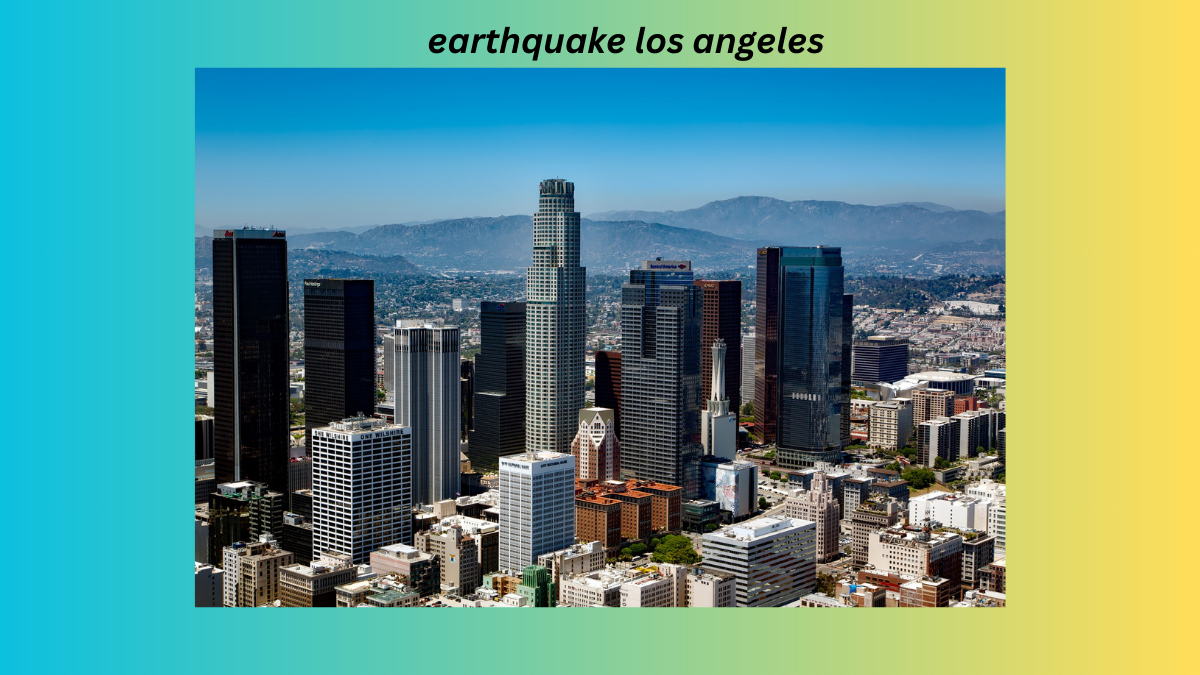The Earthquake Threat in Los Angeles: A Comprehensive Overview
Introduction: Living with the Risk of Earthquakes
Los Angeles, a vibrant city known for its sunny weather and Hollywood glamor, sits precariously along the infamous San Andreas Fault. This fault system, which forms the boundary between the Pacific and North American tectonic plates, has made Los Angeles highly susceptible to earthquakes. Earthquakes are an unavoidable reality for residents, and understanding the risks, history, and preparedness strategies is crucial for everyone living in or visiting the region.
The Science Behind Earthquakes in Los Angeles
Tectonic Plates and Fault Lines
Earthquakes occur when there is a sudden release of energy due to the movement of tectonic plates. In Los Angeles, this happens mainly along the San Andreas Fault and several other smaller but significant fault lines, such as the Newport-Inglewood and the Hollywood Fault. These faults are part of a complex network of faults that create stress over time, eventually resulting in earthquakes.
The Big One: What It Means for Los Angeles
One of the most pressing concerns is the potential for “The Big One,” a massive earthquake expected to hit Southern California with a magnitude of 7.8 or greater. Seismologists warn that such an event could cause widespread devastation, triggering building collapses, fires, and infrastructure breakdowns. Although it’s impossible to predict exactly when it will occur, the region’s long seismic history suggests that it’s only a matter of time.
Historical Earthquakes in Los Angeles
1994 Northridge Earthquake
The Northridge Earthquake remains one of the most significant in Los Angeles’ recent history. On January 17, 1994, a 6.7 magnitude quake struck the San Fernando Valley, causing widespread damage and killing 57 people. Buildings and freeways collapsed, and damages amounted to over $40 billion. This earthquake highlighted the need for better building codes and emergency preparedness in the city.
The 1933 Long Beach Earthquake
Another historic earthquake, the 1933 Long Beach Earthquake, resulted in stricter building regulations that have since become critical in minimizing damage in future quakes. This 6.4 magnitude earthquake caused severe damage to schools and other buildings, and the lessons learned from this event led to the Field Act, which regulated construction in earthquake-prone areas.
Earthquake Preparedness in Los Angeles
Building Codes and Seismic Retrofits
Los Angeles has some of the most stringent building codes in the United States, specifically designed to withstand earthquakes. However, many older buildings, especially non-ductile concrete and “soft-story” structures, remain vulnerable. In recent years, the city has launched aggressive seismic retrofit programs to strengthen these at-risk buildings.
Emergency Preparedness Plans
Both the city and residents must be prepared for the next big earthquake. Los Angeles has developed a comprehensive earthquake preparedness plan that includes evacuation routes, emergency shelters, and public communication systems. Residents are encouraged to have emergency kits, family communication plans, and to participate in drills like “The Great California ShakeOut,” an annual statewide earthquake drill.
Early Warning Systems
Advances in technology have led to the development of early warning systems, like the ShakeAlertLA app, which can provide a few seconds to tens of seconds of warning before shaking begins. While these warnings may seem minimal, they can be crucial for taking life-saving actions, such as dropping to the ground or halting trains and machinery.
The Economic and Social Impact of Earthquakes
Earthquakes can have devastating effects on the economy and social structure of Los Angeles. The cost of rebuilding after a major earthquake could reach hundreds of billions of dollars, affecting everything from transportation infrastructure to housing. Socially, earthquakes can displace thousands of people, exacerbate inequalities, and put significant stress on emergency services.
Impact on Infrastructure
Los Angeles’ vast network of highways, bridges, and public transportation systems are vulnerable to earthquake damage. The 1994 Northridge earthquake famously caused the collapse of freeway overpasses, disrupting daily life for months. While infrastructure has been improved and retrofitted since then, a major earthquake could still cause widespread disruption.
Insurance and Financial Preparedness
Earthquake insurance is often overlooked by homeowners, despite the high risk in Southern California. However, standard home insurance policies do not cover earthquake damage, making it vital for homeowners to consider earthquake-specific policies to avoid significant financial losses in the event of a quake.
Future Outlook: What’s Next for Los Angeles?
Los Angeles is not only a city at risk, but also a city preparing for the future. While the threat of a catastrophic earthquake looms, the advances in seismic technology, improved building codes, and heightened public awareness have significantly reduced the potential for widespread devastation. However, the region must continue investing in infrastructure resilience, emergency preparedness, and community education to mitigate the impact of future earthquakes.
Conclusion: A City Resilient Yet Vulnerable
Earthquakes are a constant and unpredictable threat to Los Angeles. The city has made strides in preparing for the inevitable, but the risk remains real and ever-present. For residents and visitors alike, understanding the science, history, and preparedness strategies is key to staying safe in one of the most seismically active regions in the world. While the “Big One” may be on the horizon, the resilience of Los Angeles will be defined by how well the city and its people continue to prepare.
